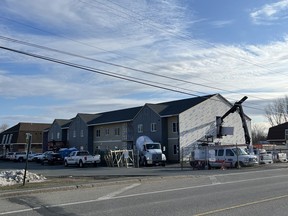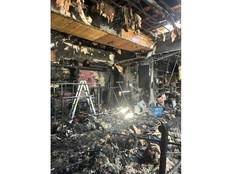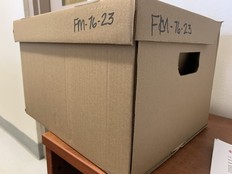Region needs more than 500 housing units by 2026: study
Bathurst needs 330 new housing units by 2026, and 178 elsewhere in Chaleur region

Article content
A recent study conducted by the Chaleur Regional Service Commission shows the region will need more than 500 housing units by 2026 to accommodate both a growing population and changing housing needs.
The housing study conducted by KPMG, presented to the board of the commission’s board April 17, predicts a growing population in Bathurst requiring 330 new housing units by 2026. In the remainder of the Chaleur region, the report says 178 new units will be required by 2026 to accommodate the changing needs of the region’s demographics.
The study said the housing is needed to cope with the influx of newcomers expected to fill the labour shortage, as well as suitable housing for the growing elderly population in the region.
The study pointed to 2021 Canadian census statistics that indicate the median age of the population is 53.6 years old in the region, compared to the national average of 41.1 years old.
“There will be changes in the needs for housing based on whose going to be retiring and new employees who are arriving to replace the people retiring,” Benjamin Koczwarski of KPMG said through translation during the meeting.
“Those are important trends that are affecting future housing needs.”
He told the board the availability of rental units in the region has also declined significantly over the last number of years.
Bathurst Mayor Kim Chamberlain said she wasn’t surprised by the results.
“I knew we had a shortage, especially for two-bedroom plus (units),” she said.
Bathurst is receiving $3 million from the federal government’s housing accelerator fund, with a commitment to built 160 units over three years, but Chamberlain said that only speaks to part of the region’s ambitions for development in coming years.
“Our goal is not to reach 60 (units per year). Our goal is to reach at least, ideally, 100 per year,” she said.
She feels the 165-unit-per-year goal may be in reach since the city plans to focus on the construction of high-density multi-unit housing.
Money from the federal accelerator fund will be dolled out as part of a new incentive program the city’s economic development department is in the process of creating, she said.
Chamberlain said the city has already gotten interest from developers looking to build, and they’ll be presented the criteria for the incentives as soon as they’re finalized.
The city is also in the process of making changes to its urban plan to reduce hurdles and ensure developers are able to build quickly when they’re ready, she said.
Chamberlain said one challenge the city and others that received the accelerator funding may face is how the demand for construction workers across the province may influence pricing.
“Developers are not going to build if they’re going to pay three-times the amount or twice the amount,” she said. “So hopefully construction costs won’t double because there are funds across the province of New Brunswick right now.”
To address the need for employees in the construction field, Chamberlain said the Cities of New Brunswick Association has been in talks with Collège communautaire du Nouveau-Brunswick in an effort to get more people trained.











Postmedia is committed to maintaining a lively but civil forum for discussion. Please keep comments relevant and respectful. Comments may take up to an hour to appear on the site. You will receive an email if there is a reply to your comment, an update to a thread you follow or if a user you follow comments. Visit our Community Guidelines for more information.